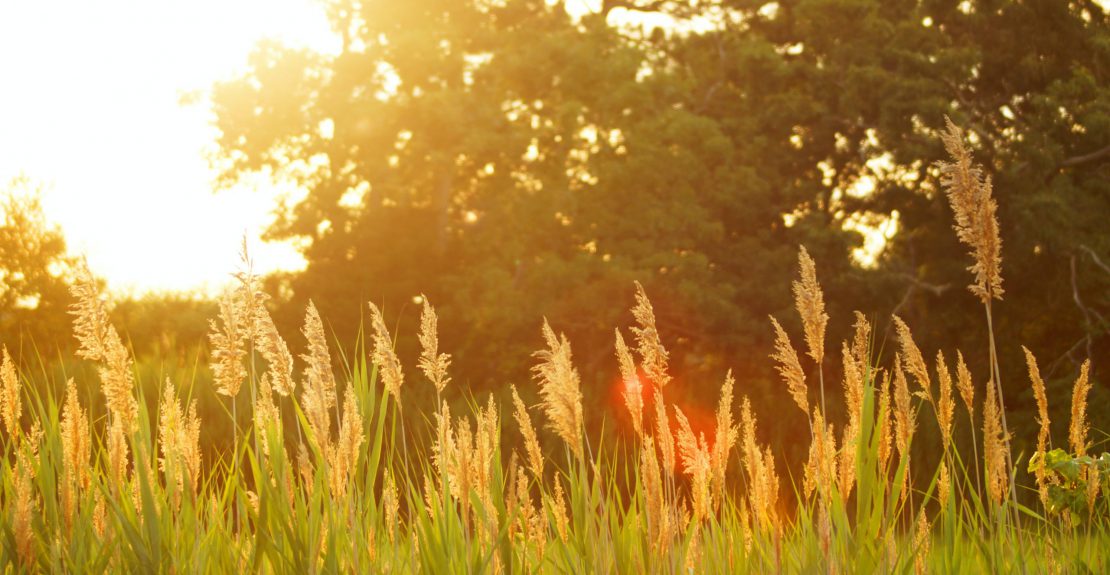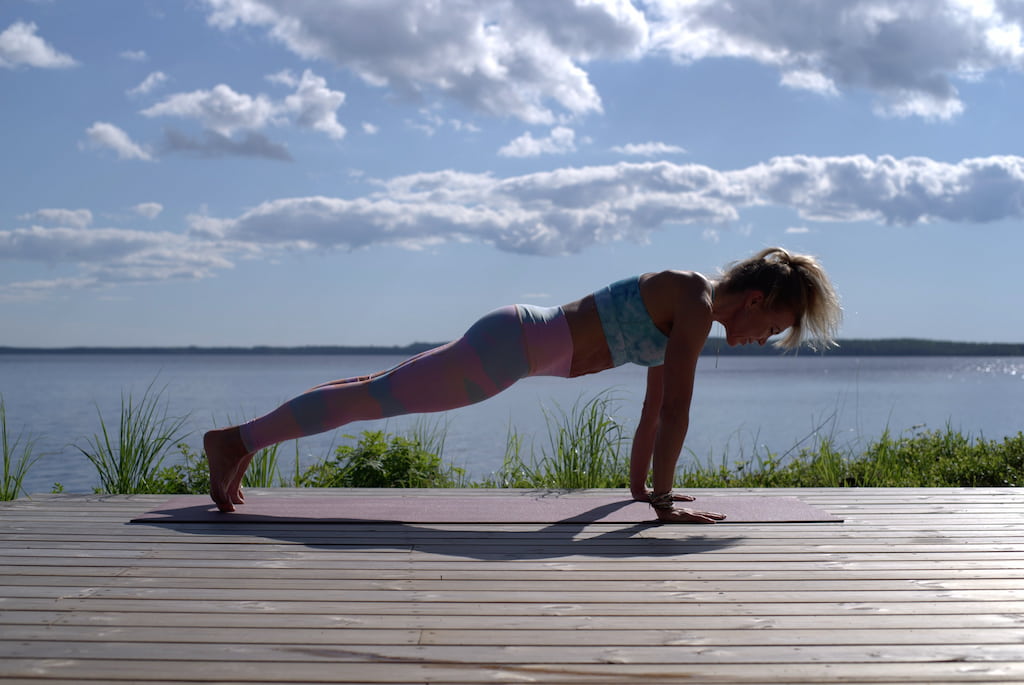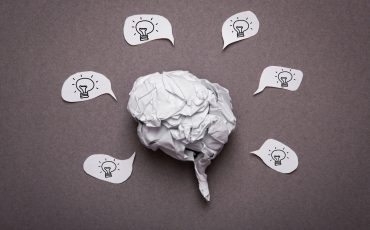Pranayama Explained

Table of contents
What is Pranayama?
“Prana” is a Sanskrit word that indicates “life force,” and corresponds to the concept of “breath”. Used in many ancient Hindu texts with similar meanings, we can actually find this concept present in all teachings that study body awareness and acknowledge the spirit-body-mind triad as a whole such as yoga, Thai Chi, or tantra. According to these teachings, the energy we take into our body is not solely composed of the chemical energy we get from food. There is another “life energy” or “life force” that fills all living things and surrounds us at every moment. Prana corresponds exactly to this life force.
We utilize this fuel mainly through our breath. According to some beliefs, diseases can occur when prana is not flowing regularly in our bodies. Moreover, our state of mind is reflected in our inhalations and exhalations. When our breaths are regular and flow easily, the mind is well-organized as well. Therefore, “breathing regulation” practices are necessary for the regulation of our mental activities. All these practices are referred to as “Pranayama” in various sources, especially in yogic texts. What kinds of current, empirical knowledge are behind all these pranayama techniques? How are the body and mind related to breathing? Let’s explore together!
How does Pranayama work?
Think of the electromagnetic field operating within a cell phone or the wireless internet in a house. When such fields cannot be spread to certain areas, the signal gets interrupted in those areas. In holistic approaches, our body has an “energetic field” similar to these examples. When the energy of this field is disrupted, the signals in our body may be interrupted or conversely, the energy flow is interrupted when physical disorders or deficiencies occur in our body. This energetic field is closely related to prana. When we look at it from the perspective of biology and neuroscience, we know that the states of our mind and body are connected to the way our central nervous system functions. We breathe in regular and soft breaths when we are calm and at rest. When an overwhelming thought appears in our mind, we tend to hold our breath even though we’re not aware of doing so most of the time. When dealing with stressful thoughts, we may try to breathe deeply, sometimes with loud sighs. When we sense danger around us, our breathing accelerates and the body becomes stiff and contracted. All of these are closely related to the modes of our nervous system.
The way our body breathes is a highly complex process if we add in the muscles, organs, posture, and alignment we use while breathing. The first goal of Pranayama is to get familiar with this whole process and to explore our breathing journey from within. In sitting meditations or yoga flows, we always observe the breath. As we look at our breath in every emotion, on every new day, and in every physical situation, we begin to realize how our current state of life is interconnected to the breath. Because “Pranayama” is what we call breathing regulation techniques, the next step is to start practicing controlling these states with focus and awareness, regulating the breath to regulate the mind.
Pranayama Techniques
There are numerous methods for controlling and regulating the flow of prana. Since most yoga and similar teachings have lived up to the present day through oral history, it isn’t possible to give an exact count of these methods. However, we’ll be addressing these techniques in light of some information that many sources have in common. First, it’s important to consider all parts of the pranayama. These are not just about breathing techniques. Several factors affect the flow of prana in the body:
- Alignment
- Movement
- Physical and Spiritual Nutrition
To understand how breathing control techniques work, it can very useful to take a brief look at these elements first.
Alignment & Movement
We mentioned that there are many organs and structures in the body that physically affect our breathing. Breathing starts from our nostrils, continuing as it enters the blood from the alveoli in our lungs, the oxygen we breathe in reaching every single cell in our body.

As our lungs are located inside the ribcage, it’s very important for the capacity and quality of our breathing that our ribcage is open and our posture isn’t bent forward. Having a long, upright spine helps us use the lungs to their full capacity. Likewise, how open and relaxed our abdominal cavity is and how effectively we use our diaphragm impacts breathing quality. Therefore, the alignment of the body is vital for maximum quality breathing. That’s why in the eight steps of yoga, “Asana”, meaning poses/postures, comes in third place. This supports and strengthens the natural, straight posture of our body. Only after that comes “Pranayama” in fourth place.
Of course, this ranking is not a strict rule that means one cannot advance to the other without accomplishing the prior. However, it is an indication that one of the foundations upon which we build breath control practice is bodily practices and alignment. That’s why each of us needs to keep the whole body active and in line with regular exercises, especially our back body muscles, which are weakened due to work, school, or daily life.
You may have noticed that living an active life has an impact on your psychological wellbeing and motivation. I am not necessarily talking about doing intense exercises or doing body awareness practices, but rather about medium to slow-paced walks or dancing! We know that maintaining physical movement relaxes our nervous system and reduces our mood swings. Movements that enhance joy and evoke fun for us can occasionally provide the necessary energy to do the other things we feel obligated to do. That’s why this dynamism increases and regulates our “life force”. The common feature of all these movements is that they are activities that slightly accelerate breathing, increase the oxygen input to your body, and also allow you to release the accumulated energy and tension in the muscles, thereby increasing prana!
As long as you have a regular practice that supports the spine and helps keep your body active, you can choose any movement pattern according to your own body, preference, or health condition!

Physical and Spiritual Nutrition
Of course, when we talk about life energy, we don’t just consider breath. When people say “Music is food for the soul,” keeping things in our lives that nourish our soul, like music, is actually a kind of prana-increasing practice. Listening to our favorite mood-boosting music, or walking in a flower garden can change the flow of the whole day. Therefore, we can increase our inner energy by getting support from arts, crafts, and elements that appeal to our senses. We also know that feeling trust, love, and connection through our sense of touch relaxes us by regulating the nervous system.
Another aspect of our relationship to our breath is our physical nutrition. Nutrition isn’t about right and wrong, but rather what nourishes you specifically. Discovering our relationship with food is an integral part of deepening our practice. Gas, bloating, constipation, and irregular digestive systems affect the entire abdominal cavity, and therefore impact pranayama practices. If you have doubts or questions about this, you should definitely consult a doctor. The main thing is to establish a relationship with food that cultivates feelings of “joy” and “comfort” in the body.
Breathing Techniques
Some basic breathing techniques are common to many approaches to yoga. When you include different approaches, it’s possible to come across dozens of pranayamas. In this article, we’ve included a few of the most common techniques. We can also divide pranayamas into two main groups: some are “warming” techniques that increase our energy and prepare us for those activities that require power and others are calming and regulating, resulting in a “cooling” effect. Another important issue that comes to mind about pranayama is the Bandhas.
Bandhas
The word ‘bandha’ means to lock. So, what does this mean in the context of body and prana? If we think about it, there are four basic stages of breathing: inhaling, holding the breath in, exhaling, and holding the breath out. The duration of the two intermediate stages in our daily life, in which we keep the breath inside and outside, is quite short. That’s why we don’t really notice them. However, in pranayama techniques, these two processes, the holding of the breaths in and out, are highly emphasized.
There are three bandhas, or locks, in our body. These are respectively the throat (jalandhara bandha), abdomen (uddiyana bandha), and pelvic (mula bandha) locks. The rationale of Bandha practices is to lock the prana inside for a while to increase the energy in the inner space and to ensure that the benefit we get from the breath reaches every part of the body. Performing the necessary exercises for the activation of the bandhas can improve our breathing capacity and increase our energy over time. Since these exercises are quite powerful, they definitely require regular practice and are best done with help of a teacher. Bandha activation regulates the flow of prana by providing alignment in the body.

Ujjayi Breath
Unlike most other pranayamas, Ujjayi breathing is a technique we can practice alone for a certain amount of time or for a number of repetitions. You can alternate Ujjayi breathing with natural breathing in many activities: during yoga practice, while sitting, working, or walking. Ujjayi breathing is actually a form of breathing and has countless benefits. The most important ones are: feelings of calm, decreased tension especially around the chest and abdomen, and increased capacity of the rib cage. This breath, sometimes called “Ocean Breath,” also causes a sound similar to the voice of the Star Wars character, Darth Vader, so you may even hear the term, “Darth Vader Breath”. It’s also very easy to practice.
- Sit comfortably, with your spine long and in an upright position.
- Place the palm of one hand facing towards your mouth and nose.
- Take a deep breath through your nose and exhale through your mouth into your hand with the sound of “ha”, as if you were trying to steam up a glass.
- Take a deep breath again and repeat steps 1-3 one more time, feeling the warmth of your breath in your palm.
- Breathe deeply again and this time try to do the same exhalation with your lips closed. This may feel different at first, but repeat a few times until you get used to it.
The exhalation at the last step will sound similar to the sound of waves. In fact, while practicing this breath, we narrow our throat slightly and hold this slight contraction, forming the “ujjayi breath”.
When you feel angry or tense during the day, you can try to close your eyes and practice Ujjayi breathing for a minute. You’ll feel so much calmer and you can switch into ujjayi breathing anytime and anywhere you want, as long as you don’t notice any discomfort.
Sitali Pranayama
Sitali pranayama is a very ancient technique known for its cooling and humidifying effects in Kundalini Yoga to benefit various organs in the body and the endocrine gland. Even soldiers and climbers who have to walk for a long time in the heat and have no access to water use a very similar technique.
For Sitali pranayama:
- Settle into a sitting position, spine long and straight. You can raise the hips by placing pillows or cushions under them when necessary.
- Roll your tongue so that it forms a circular, cylindrical shape, holding it in place with your lips. Take a breath in as if sucking air with a straw.*
- Let your tongue come back to its normal state, close the lips and hold your breath for a few seconds.
- Breathe normally through your nose.
That’s how simple Sitali pranayama is! You can increase your inhalation in step 2 up to 5-6 seconds as you get used to the technique and extend the time you hold your breath. You can start your practice by doing these four steps 5 to 10 times, increasing this number over time according to its effect on you.
*Some people may not be able to roll their tongues genetically. In this case, you can simply take the air in from the upper surface of the tongue by slightly pushing your tongue out between your lips.
Bhramari
Bhramari Pranayama is also known as bee breathing. It gets this name from the noise that comes out while practicing the technique, which sounds like the humming of bees. This technique, which calms the nervous system and the mind just like ujjayi, also helps to reduce the tension around the head.
- Settle in any sitting position with your spine long and straight. You can raise the hips by placing pillows or cushions under them when necessary.
- Place two thumbs on your ears only light enough to block the sound, as if you want to cover your ears. Place the two index fingers in the middle of your forehead. And the rest of your fingers can be placed on the sides of the nose respectively.
- Throughout the exercise, keep the chin, tongue, and teeth as loose as possible. Keep the upper and lower teeth slightly apart, and the tip of your tongue may slightly settle in the space behind the upper teeth.
- Take a long deep breath through your nose.
- Breathe out with the “hmm” sound coming from the throat. You should not force yourself for this sound to come out, it should be a “hmm” sound that comes out of your throat easily and spontaneously throughout your exhalation.
Once you get used to the technique, repeat it a few times and end the practice. At the end of the practice, close your eyes and observe the effects on your mouth, tongue, face, and head for a few breaths. If you want to simplify the technique, you can try the version where you slightly cover your ears with only your index fingers.
You have learned the essence of breathing techniques from various different disciplines and the ways in which these techniques are applied! Have you ever practiced any breathing techniques before reading this post? What would you say to taking the first step into this practice and trying these breathing techniques from now on? We would love for you to share your experiences with us in the comments!
Translator : Ebru Peközer




